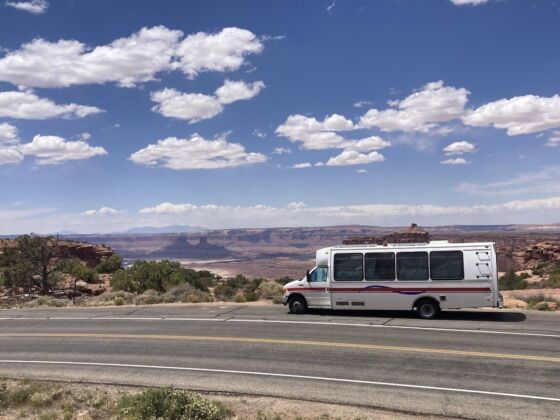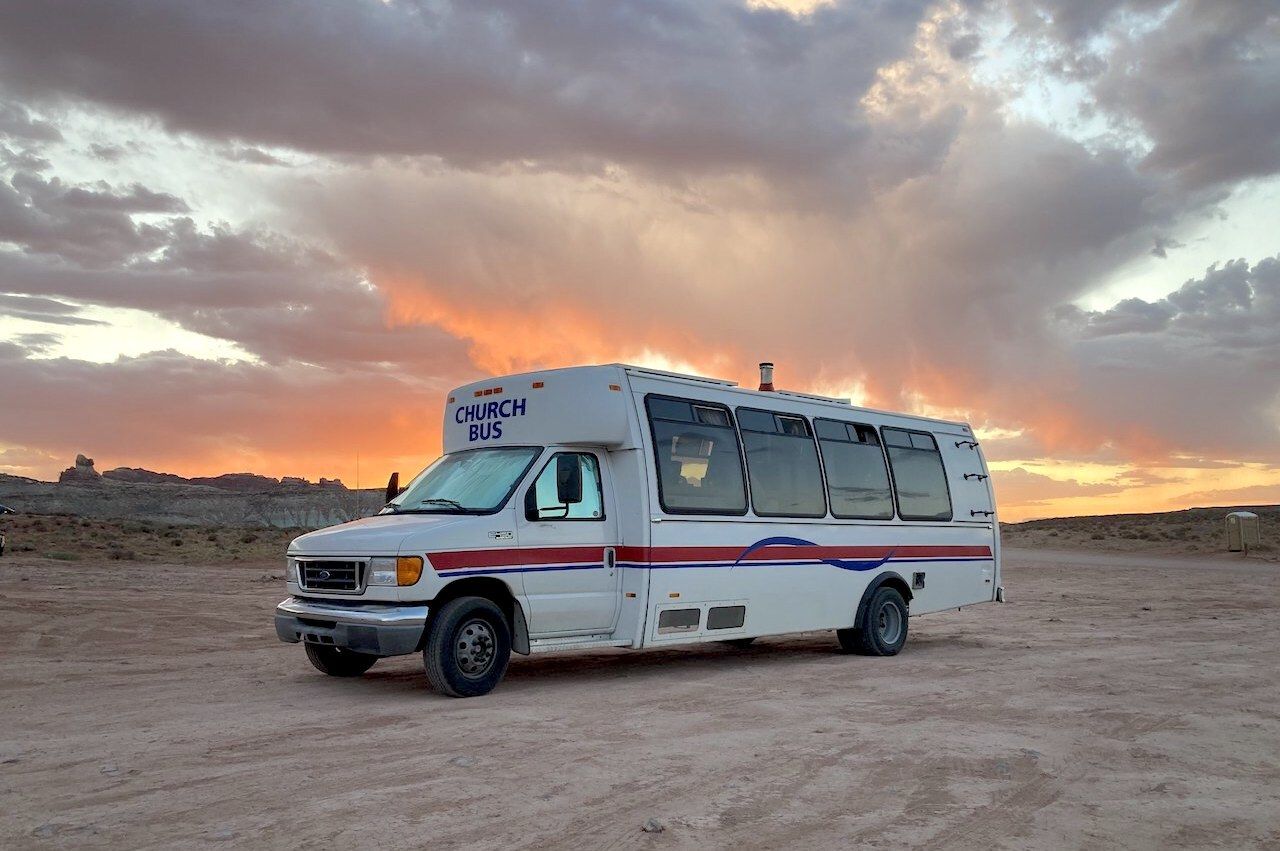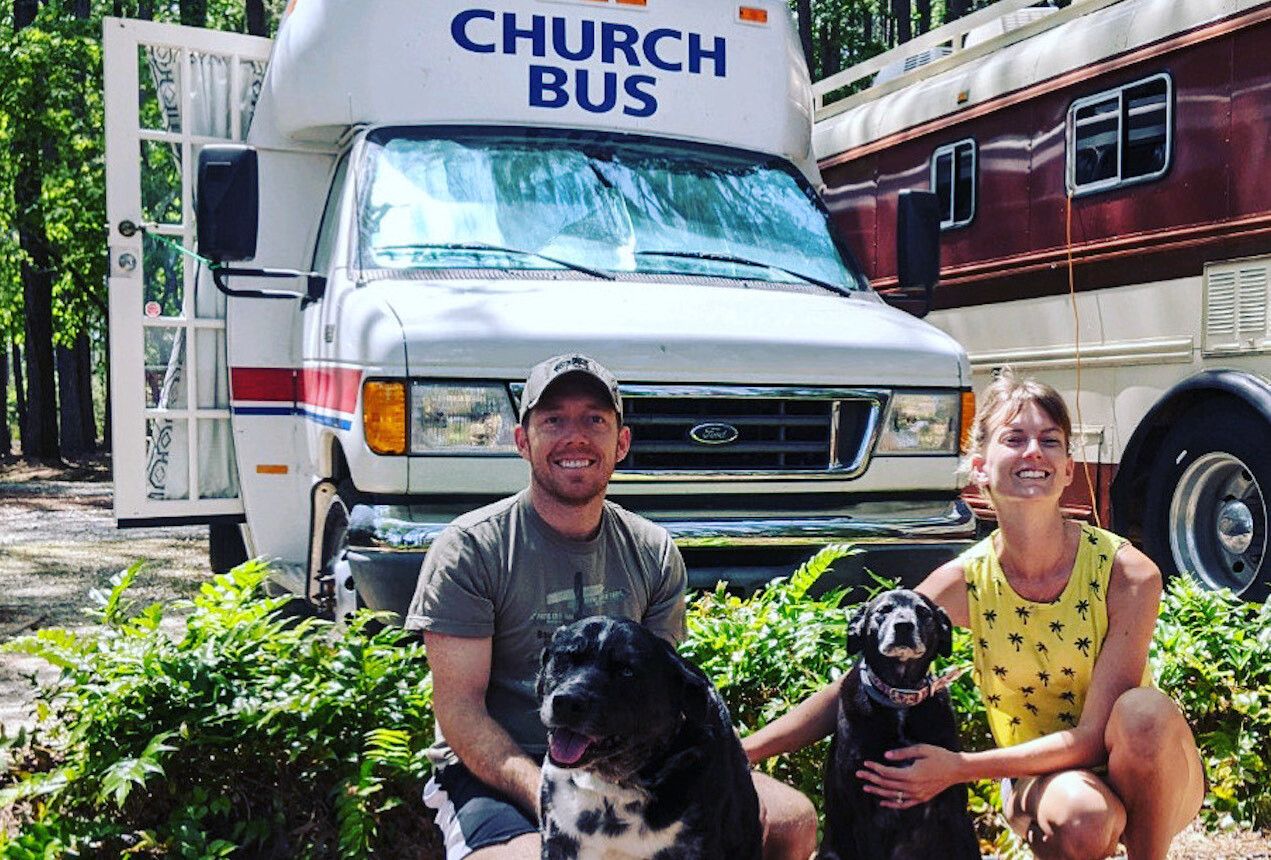Long-term travel is expensive. There’s the cost of flights and hotels, as well as rent for an apartment that stays empty while gone. In a converted vehicle, however, the cost of living is low and the opportunities for exploring are high. But before you decide to live in converted bus, you need to get prepared.
In May of 2018, I bought a Nissan NV with my partner, named it Powerline, and spent the next six months building it out. We lived in our first van for about two years and loved it before eventually deciding we needed a larger living space: a passenger shuttle bus listed on eBay that had previously been used to transport churchgoers on Sundays.
We spent the next couple of months working non-stop to convert the bus into our next home and, once finished, hit the road. Along the way, we learned that while we love this lifestyle, it also comes with very real challenges.
If you want to live in converted bus for some time, or even just considering taking a long road trip, here’s some advice for happy mobile living.



